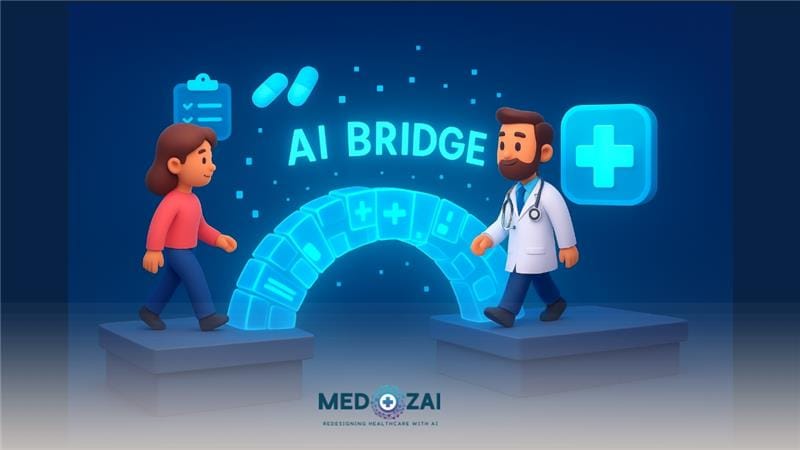Building a Digital Front Door with AI: What Hospitals Need to Know
Introduction
Hospitals across the U.S. and Canada are under pressure to improve access, reduce wait times, and streamline patient interactions. Traditional phone-based scheduling and paper intake forms frustrate patients and overload staff. The concept of a “digital front door”, a unified set of tools that connects patients to care through digital touchpoints—is now a strategic priority for health systems.
Artificial intelligence (AI) is central to this shift. From chatbots and voice assistants to smart triage and scheduling systems, AI powers a seamless entry point into care. For hospitals seeking to modernize, understanding what the digital front door means and how AI strengthens is essential.
What Is the Digital Front Door in Healthcare?
- Seamless scheduling and rescheduling
- Digital intake forms and insurance capture
- Chat and call deflection with assistants
- EMR integration for real-time updates
- Personalized guidance for patient journeys
Where AI Strengthens the Digital Front Door
1. AI-Powered Chatbots and Voice Assistants
Architecture and Integration Patterns
Compliance and Governance
Implementation Playbook: 90-Day Roadmap
Phase 1: Discovery & Baseline (Weeks 1–3)
Phase 2: Pilot (Weeks 4–8)
Phase 3: Scale & Iterate (Weeks 9–12)
How Platforms Like Medozai Support Hospitals
Platforms like Medozai strengthen the hospital digital front door by automating routine processes, improving data accuracy, and ensuring compliance without adding extra complexity. Core capabilities include:
Scheduling:
Intake:
Engagement:
Compliance:
By anchoring digital front door initiatives in these functions, platforms like Medozai allow hospitals to introduce improvements gradually—starting with their most pressing operational challenges, then scaling across departments as adoption grows.
Common Pitfalls to Avoid
- Over-promising clinical diagnosis: AI should support operational triage—not replace clinical judgment.
- Fragmented deployments: Disconnected tools create poor user experiences.
- Neglecting staff adoption: Without training, digital tools may go unused.
- Skipping measurement: ROI and efficiency gains must be tracked against baseline metrics.
Limitations
Conclusion
Frequently Asked Questions (FAQs)
1. What is a digital front door in healthcare?
It’s the unified set of digital tools—web, mobile, SMS, chat—that connect patients throughout their care journey.
2. How does AI improve the digital front door?
AI streamlines scheduling, intake, and patient routing through automation and data integration.
3. Is the digital front door secure?
Yes, when implemented with encryption, audit logs, access controls, and bias testing.
4. How do hospitals measure ROI from a digital front door?
Metrics include reduced no-shows, faster cycle times, fewer abandoned calls, and better patient experience.
5. Can small clinics use a digital front door?
Absolutely—many begin with scheduling or intake automation and scale over time.

